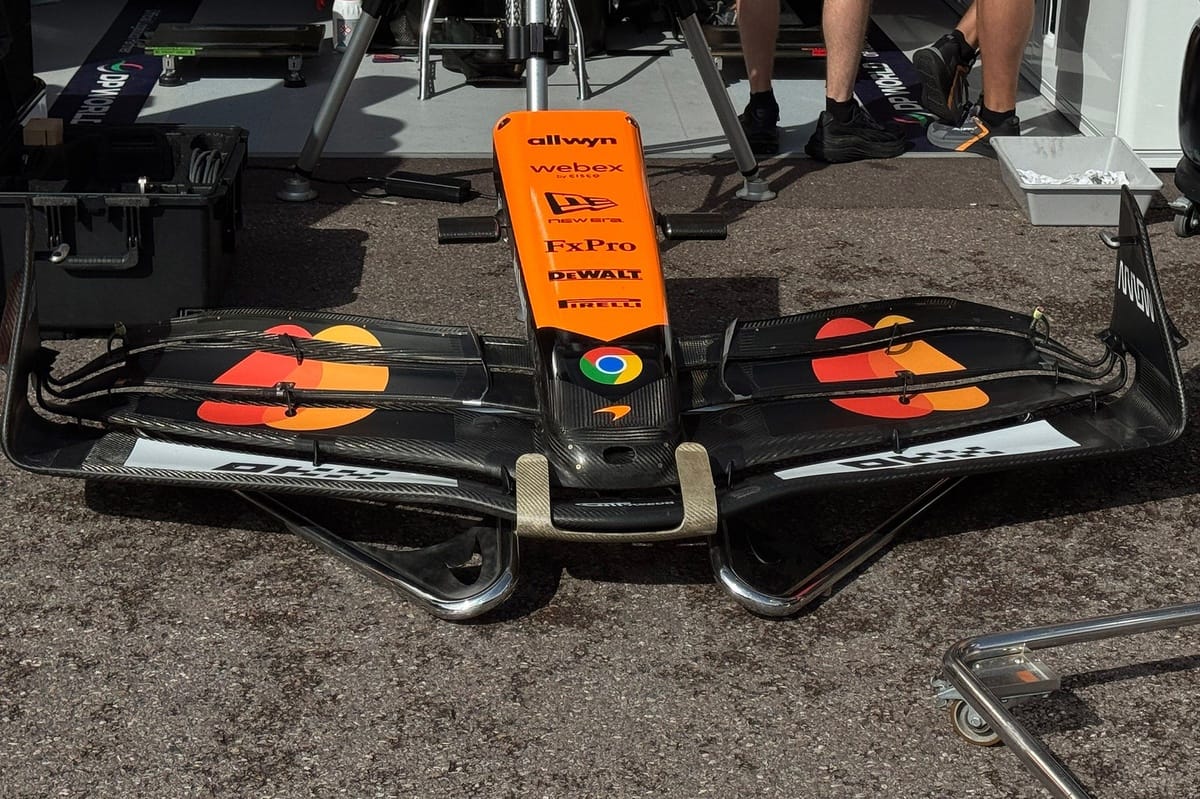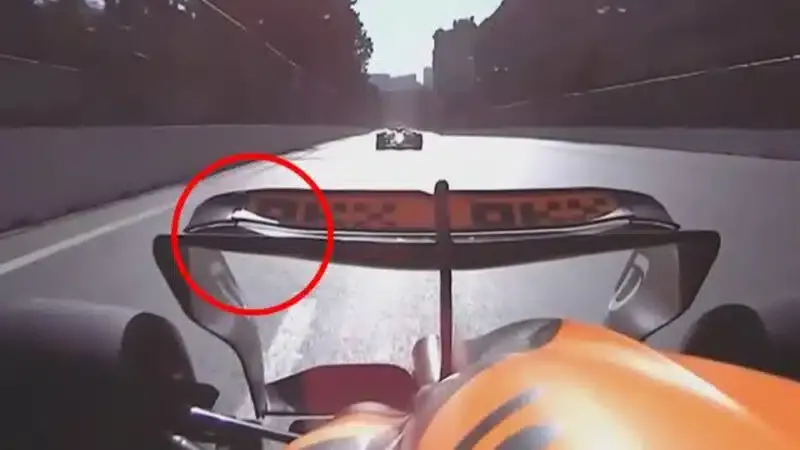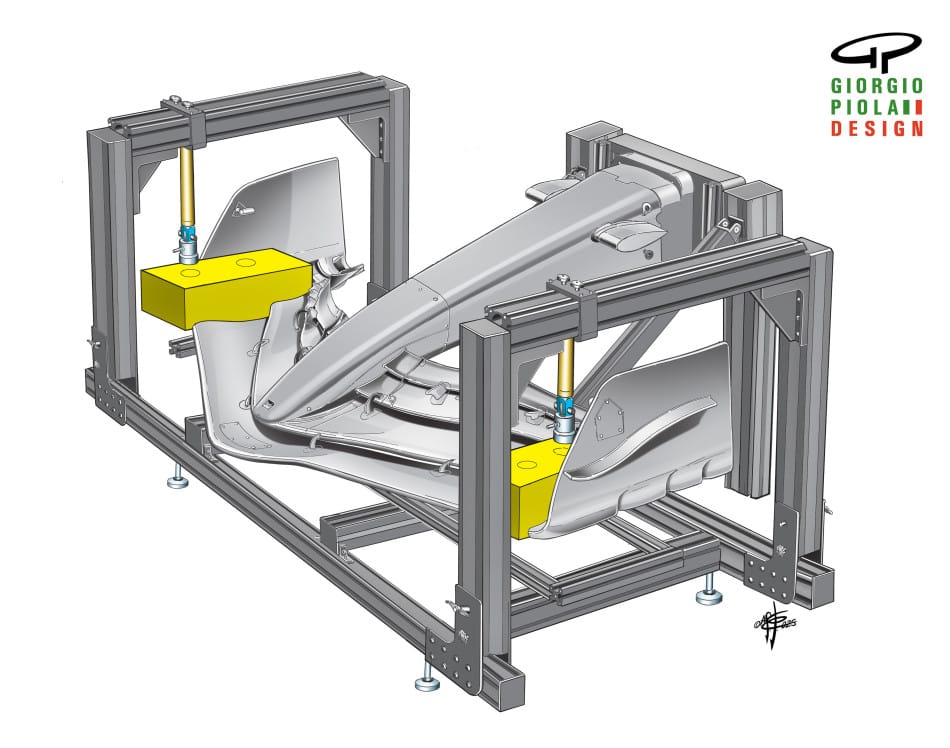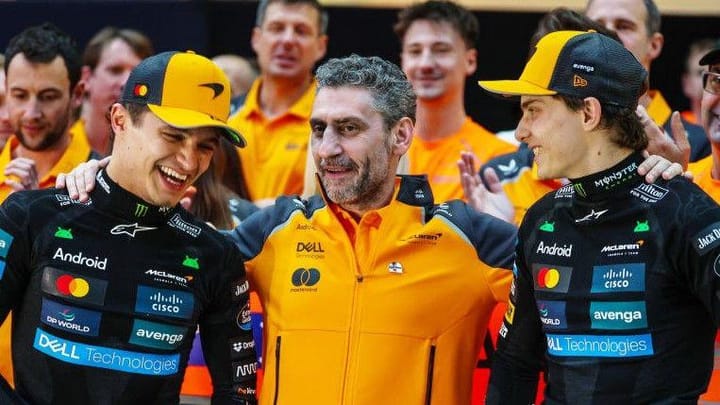The Clampdown on Flexible Wings
The FIA are implementing more stringent load tests on front wings from the Spanish Grand Prix onwards as part of the clampdown on flexible components.

The 2025 season has largely seen one team rather running away with things. That team would be none other than McLaren, who currently hold quite the advantage in the Constructors' Championship (319 to Mercedes' 147) and have won all but two of the races so far. That doesn't sound too "dominant", but you have to remember that those other Grand Prix were won by reigning champion, Max Verstappen, at circuits where overtaking is difficult. In other words, there's perhaps a caveat over those wins.

Flexible bodywork is not a new topic in Formula 1. In fact, as far back as the late 00s and early 10s, we were discussing flexible front wings intensely, and listing it as one of many genius components on the dominant Red Bulls of the era. Aerodynamicists are always looking for any advantage they can gain, and wings are a key area. For an F1 car to achieve ultimate pace on the track, you'd want it to be wingless on the straights and fully-winged in the corners, but sadly that's not possible. So, a clever compromise is to have wings that deflect on the straights and lift back for optimum cornering.
This deflection is known as aeroelasticity. Think of it as the bending, or deforming, or a material under aerodynamic load - the weight of the air pushing down on the car. As a car's speed increases, the weight of the air increases. As such, aeroelastic wings would flex under high aerodynamic load. The FIA typically don't like flexible bodywork because it can lead to incidents where material fade causes huge chunks of carbon fibre to be launched into the air during a race - that's not a good look and it could seriously hurt a driver, marshal, or fan.
The FIA have deflection restrictions for bodywork, and tests that they can do to determine if something is compliant. For wings, this typically involves placing weights on the extremities of the wings and measuring the distance by which certain regions deflect. The problem with these tests is that they have to be done while the car is static - obviously! As such, creating a "twisting" effect under horizontal aerodynamic load, would fly under the radar of the FIA tests. In other words, as air flow increases over the wings, the components twist, pushing the wings down and reducing drag - giving the car a higher top speed. As the car brakes, the air flow slows and the wing lifts back to its position, giving the car higher downforce for the incoming corner.

Noting that this is indeed a problem, the FIA decided to install static cameras and target markers on certain areas of the car, so they can monitor deflection while the car is out on track. They can use this to set restrictions and dish out penalties where appropriate too. This worked, and the conversation of flexible wings really went quiet for some time. That was until the 2024 Azerbaijan Grand Prix. The rear-facing camera shots of Piastri defending from Leclerc appeared to show the flap (DRS) of the rear wing lifting at top speed, creating what many called "mini-DRS". When Piastri braked, the flap would close, thus returning his rear wing to full downforce mode.
The FIA, obviously, received a lot of complaints, and insisted that the McLaren rear wing was within the regulations. An agreement was reached that McLaren would not run that specification of rear wing again for the rest of the season, and the FIA announced they would introduce more stringent tests for 2025. Fresh accusations at pre-season testing this year, prompted the FIA to introduce further camera monitoring during free-practice and the opening round in Melbourne. While all teams were cleared after the Australian Grand Prix, the FIA decided they were going to introduce a new maximum deflection limit for the rear wing from round 2 onwards.

The regulation originally stated that a maximum deflection limit between the flap and the mainplane with an applied 75 kg load of 2 mm was allowed. However, the FIA reduced this to 0.25 mm for the Japanese Grand Prix, since the Chinese Grand Prix was so close to the Australian Grand Prix, an allowance of 0.5 mm was given to all teams. McLaren insist that the aeroelasticity of their rear (and, spoiler, front) wing has not been the reason for their upturn in pace since the start of the 2024 season. But, as is always the case in this sport, their nearest rivals (Ferrari and Red Bull) are immensely vocal about what they perceive to be flexi-wings and how far the regulations are being pushed.
Now, from the Spanish Grand Prix onwards, the front wings are under tighter scrutiny in an attempt to level the playing field. The front wing is tested with 1000 N (Newtons), which is approximately 100 kg weight. The force is applied downward at two points along the wing, somewhere towards the middle of each arm. Prior to this weekend, the wing was allowed to deflect up to 15 mm when the load is applied symmetrically (i.e., to both sides of the wing), and 20 mm when the load is applied to one side (since this would include deflection at the nose cone too). The change is for these deflection distances to be reduced by 5 mm, so 10 mm symmetrical deflection and 15 mm on one side.

There are further changes too! Previously the front wing flag (the bit that sticks up) was allowed to deflect up to 5 mm with a 60 N force applied, this has since been reduced to 3 mm. So that's a change to how the wing can flex vertically and horizontally under extreme load. So the front wing's twisting and bending at top speed should be reduced.
The combined change in regulation is supposed to reshuffle the pecking order of the 2025 season, which may sound a bit unfair. Many new fans might be saying that the FIA are only introducing this change because McLaren are running away with it. It's not the first time the FIA have had to put in technical directives mid-season and it won't be the last. McLaren are not specifically being targeted here, in fact it's designed to make the sport cheaper, more competitive, and fairer for the smaller teams who might not be able to develop these components. The teams are always given enough time to make adjustments, test, and deploy their new parts should they not be compliant.
What do you think? Will this bring the field closer than ever? Are McLaren going to be just as strong as they were in the first 8 races?




Comments ()